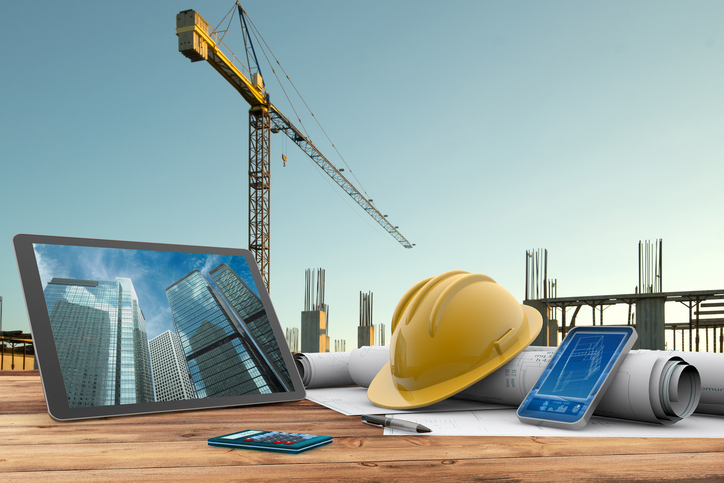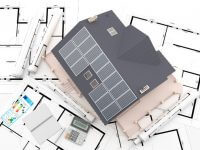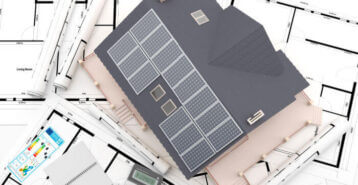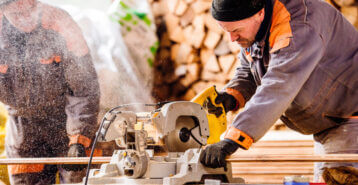
As technology advances, almost every aspect of the building process adapts to incorporate newer and faster ways of getting jobs done. Because it’s important for every professional should keep up to date on the latest technology trends in the market, here are five of the top tech trends that could change the home building market as we know it.
3D printing
When the first 3D printer was invented in the 1980s, it was difficult to imagine that this particular machine would someday form a crucial part of the construction industry. Today, 3D printers are used for a wide variety of projects to replicate products with new materials. Architects and builders now regularly use computer programs to create scaled models of homes and small parts such as nuts and bolts.
The future of 3D printing is wide open. As the technology behind these computer-generated objects progresses, it will be possible to mass-produce 3D printed versions of furniture or larger building materials. It will even be possible to use 3D printing for different roof types and even entire homes. The pre-fab home market is still thriving, so incorporating 3D printing to save time and creatively use materials is the next logical step here.

Drones
Once thought to be the domain of military intelligence and gadget lovers, drones are now a key part of the home building industry. From cross-site materials delivery to aerial imagery for site surveys and obscured areas, drones benefit construction projects in a variety of ways:
- Streamlining building projects
- Saving time and money
- Keeping clients interested with cutting-edge technology
The future use of drones in the home building industry will most likely see links to robotics, communication, and more hands-free building practices. Keep your eyes to the skies (and the news headlines) for the latest developments, and consider using drones for your next building project if you want your business to stay ahead of the game.

Virtual and augmented reality
Both augmented and virtual reality simulators have been around for several decades, but their popularity is still steadily growing as mobile phone and other connectivity technologies advance. Virtual reality (VR) allows users to create and view an imaginary world, while augmented reality (AR) takes existing spaces and fills them with things that could be—including furniture, landscaping, walls, and even entire homes. Currently, professionals across the home building market are using augmented reality simulators in order to visualize a building in its completed state without spending hundreds—or thousands—on prototypes and expensive models. During the building process, this tech is particularly relevant for:
- Architects: using AR as a high-tech alternative to blueprints and scale models
- Contractors and site managers: making decisions on placement of walls, fixtures, and fittings, and more
- Interior designers: selecting furniture, color schemes, and decorative accessories for homes
- Marketing teams: showing completed renderings of homes to clients during the sales process
Future uses for AR include the widespread use of virtual tours of homes and communities. This could further streamline both building and sales processes, as well as the development of AR products—including headsets that allow both professionals and consumers to see products as they are built and placed around the home. AR use could even include the possibility of designing homes with holograms (yes, like Tony Stark).
Robotics
The use of robots in industrial environments isn’t new. In fact, thousands of large industrial plants and production companies make use of automated assembly lines to mass-produce products on a daily basis. Robotic machinery is gradually being introduced into the home building market to help contractors and other industry professionals design, build, and install parts of homes. Someday this could even include building entire homes far quicker than is capable of human hands.
Because programmable bulldozers and other autonomous equipment can speed up building projects and cut down on labor costs, the next logical step here is linking robotics to some of the other tech processes mentioned in this article. Once tech-savvy contractors find a way to create machines that can visualize, transport, and create products on their own, the productivity and quality of building projects will skyrocket.

Apps and virtual programs
Ask any of your professional colleagues about their business technology use, and chances are that they use mobile apps and online programs to make their lives easier. Apps and Internet-based programs are invaluable these days for many reasons, including (but not limited to):
- Communication
- Service and production speed
- Billing and invoicing
- Ordering materials
Generally speaking, if you name it, an app can make it happen—both efficiently and reliably.
As tech users become more confident with their online skills, increased efficacy and speed become top priorities. The Internet of Things (IoT) and smart technology allow users to link programs and products in order to streamline processes and keep things working as fast as possible. Homeowners have already embraced this idea with their houses full of smart gadgets and products, so it only seems fair that the home building market should adopt these practices as well. In the future, apps will control all sorts of contractor-friendly tech—including robotic machinery, drones, and every aspect of site maintenance—while more homes will be equipped with IoT-friendly devices in order to keep everyone connected in our increasingly tech-centered world.
All home improvement contractors need to stay in the know about future technologies so you can turn your HVAC, windows, solar, or roofing leads into successfully completed jobs and happy customers.














